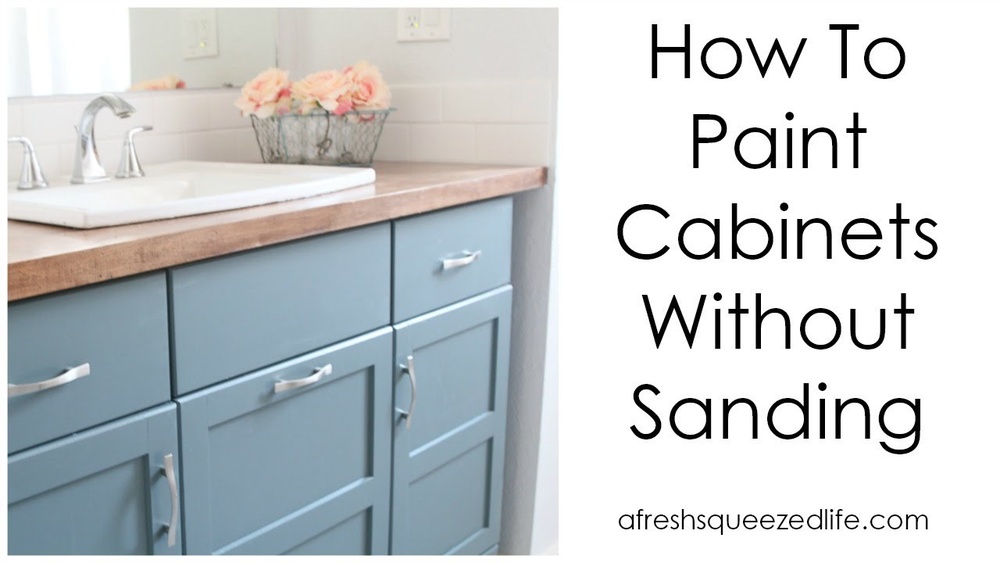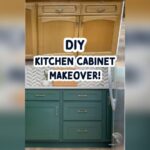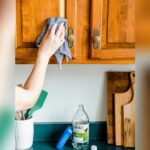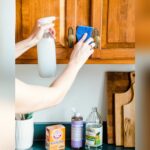Are you tired of your outdated kitchen cabinets but dread the mess and effort sanding brings? What if you could give your cabinets a fresh, beautiful look without that dusty, time-consuming step?
Painting kitchen cabinets without sanding is not only possible—it’s easier than you think. By using simple tools like a liquid deglosser and a quality bonding primer, you can transform your kitchen quickly and effectively. Keep reading to discover the step-by-step process that will save you time, reduce hassle, and deliver stunning results for your cabinets—no sanding required!
Prepare Cabinets For Painting
Start by choosing a degreasing cleaner made for kitchens. These cleaners remove grease and dirt well. Avoid cleaners that leave a sticky residue.
Use a sponge or cloth to scrub all cabinet surfaces carefully. Pay special attention to areas near the stove and handles where grease builds up.
Rinse the cabinets with clean water to remove any leftover cleaner. Let the surfaces dry completely before painting. This step helps the paint stick better and last longer.
Thorough cleaning is key. Without it, paint may peel or chip quickly. Clean cabinets give you a smooth and fresh base for painting.
Use Liquid Deglosser
Use a liquid deglosser to prepare cabinets without sanding. It works well on dull glossy finishes, making surfaces less shiny and ready for paint. Apply the deglosser with a lint-free cloth to avoid leaving fibers behind.
This product helps enhance paint adhesion, so the paint sticks firmly and lasts longer. Wiping evenly ensures all areas are treated. Wait a few minutes for it to dry before painting.
Liquid deglosser saves time and effort compared to sanding. It also reduces dust and mess in your workspace. Using it correctly gives a smooth base for your kitchen cabinets’ new look.
Select The Right Primer
Bonding primer is crucial for painting cabinets without sanding. It sticks well to slick surfaces and helps paint last longer. Using the right primer makes the paint job smooth and durable.
| Recommended Primer Brands | Key Features |
|---|---|
| Zinsser Bulls Eye 1-2-3 | Great adhesion, blocks stains, water-based |
| KILZ Adhesion | Works on glossy surfaces, oil-based |
| Rust-Oleum Bonding Primer | Strong grip, suitable for tough surfaces |
Apply primer in thin, even coats. Use a brush or roller to avoid streaks. Let each coat dry before adding the next. This prevents peeling and ensures a smooth finish.
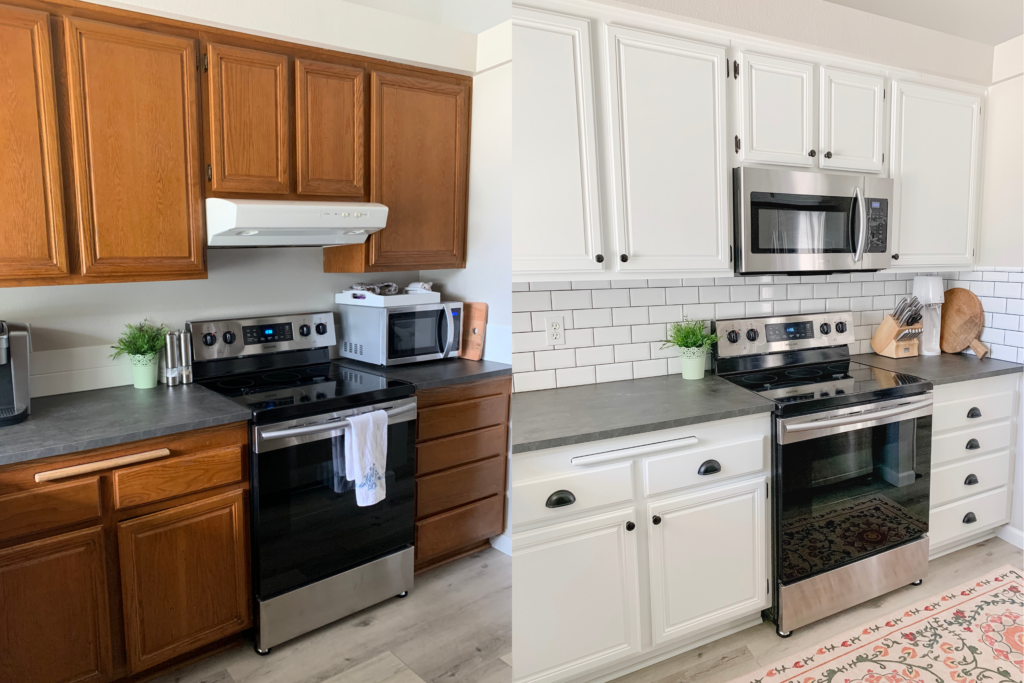
Painting Techniques
Choosing the right paint type is key. Use acrylic latex paint or chalk paint for smooth coverage and durability. These paints stick well without sanding.
Use rollers or sprayers to apply paint evenly. Rollers work well for flat areas. Sprayers can reach corners and edges easily. Both give a smooth finish.
Apply multiple thin coats instead of one thick coat. Let each coat dry fully before adding the next. This helps the paint last longer and look better.
Key Tips For Best Results
Check the cabinet surface carefully. Look for peeling paint or rough spots. Clean the surface well to remove grease and dirt. A clean surface helps paint stick better.
Allow enough drying time between each step. After cleaning, wait until the cabinets are fully dry. After applying primer or paint, let them dry completely too. This prevents paint from peeling later.
To prevent paint peeling, use a strong primer made for slick surfaces. Avoid thick paint layers; apply thin coats instead. Let each coat dry before adding the next. Avoid touching or using the cabinets until paint is fully cured.
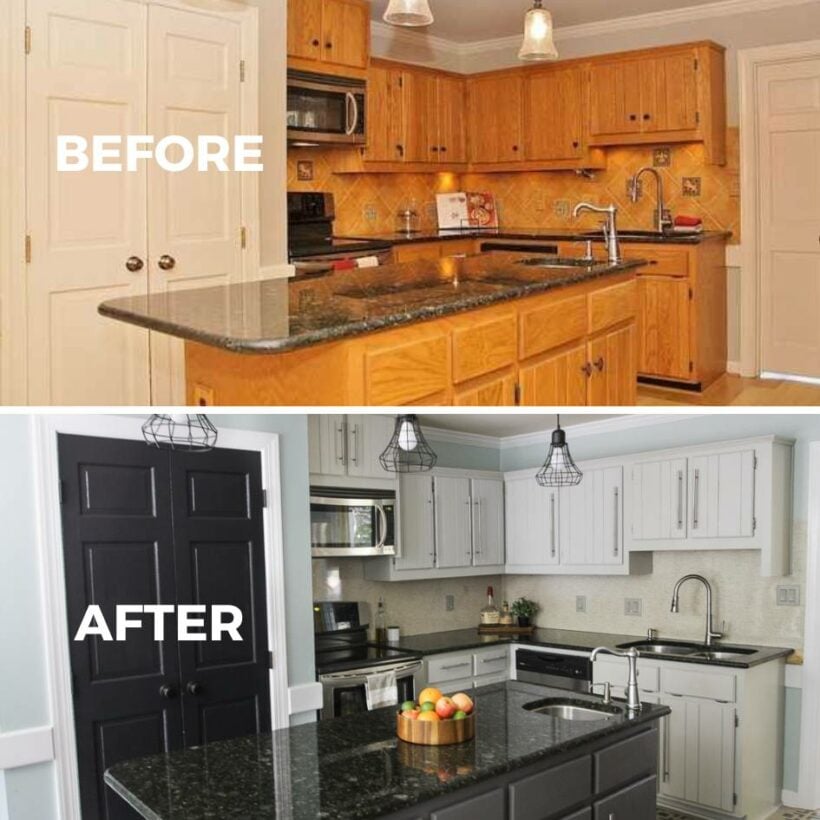
Advantages Of Skipping Sanding
Skipping sanding helps you save a lot of time and effort. Preparing cabinets becomes much easier and faster. No need to use sandpaper or create dust.
The prep process is simpler. Cleaning and using a liquid deglosser is enough to prepare surfaces. This reduces mess and keeps your workspace clean.
You can still achieve a smooth, flawless finish. Using a good bonding primer and paint ensures the new coat sticks well. Cabinets look fresh and last longer without sanding.
Potential Drawbacks
Durability concerns arise since paint may not stick well without sanding. Over time, paint can chip or peel, especially in kitchens with frequent use. Glossy surfaces can cause adhesion problems if not properly prepped. Using a bonding primer helps but does not fully replace sanding.
Surface damage risks increase if the cabinets have old paint or varnish. Skipping sanding can leave rough or uneven areas. Paint applied on these spots might look blotchy or peel quickly. Cleaning alone does not remove all loose particles or imperfections.
When to consider sanding includes cases where cabinets have damaged or glossy finishes. Sanding smooths surfaces and helps paint last longer. For a strong, lasting finish, light sanding is often best, especially on well-used or older cabinets.
Maintenance Tips For Painted Cabinets
Use mild cleaners like dish soap or gentle sprays. Avoid products with bleach or ammonia that can damage paint.
Clean with a soft cloth or sponge to protect the paint’s surface. Harsh scrubbing may wear off the paint.
Fix small chips quickly with matching paint. This stops the damage from spreading and keeps cabinets looking fresh.

Frequently Asked Questions
Can You Paint Over Cabinets Without Sanding?
Yes, you can paint cabinets without sanding by using a liquid deglosser and a strong bonding primer. Clean cabinets thoroughly to remove grease first. This method saves time but requires primer for paint adhesion and durability.
Can I Just Paint Over My Kitchen Cabinets?
Yes, you can paint kitchen cabinets without sanding by cleaning thoroughly, using a liquid deglosser, and applying a strong bonding primer for adhesion and durability.
Is It Better To Brush Or Roll Paint On Kitchen Cabinets?
Rolling paint on kitchen cabinets offers a smooth, even finish and covers large areas quickly. Brushing helps reach detailed spots and edges. Combining both methods ensures the best, professional-looking results.
What Is The Easiest Way To Paint Kitchen Cabinets?
The easiest way to paint kitchen cabinets is to clean thoroughly, apply a liquid deglosser, use a bonding primer, then paint.
Conclusion
Painting kitchen cabinets without sanding saves time and effort. Clean surfaces well to remove grease and dirt. Use a liquid deglosser to prepare glossy finishes. Apply a strong bonding primer to help paint stick and last. Choose quality paint and tools for a smooth finish.
This method works best on cabinets in good condition. Following these simple steps can refresh your kitchen without a big mess. Try this easy approach to update your cabinets with less hassle. Your kitchen will look fresh and inviting in no time.

Yes, working as , Food Blogger and Product Reviewer for last 6 years. Here you will get amazing deals for Smart kitchen products. I am your best source for the latest update in cooking trends. I provide insightful articles, reviews, and analysis on cutting-edge kitchen gadget. My mission is to empower readers with the knowledge they need to stay ahead in a rapidly evolving coking world. Join me as we explore the future of food technology and how it shapes our lives today and tomorrow.

